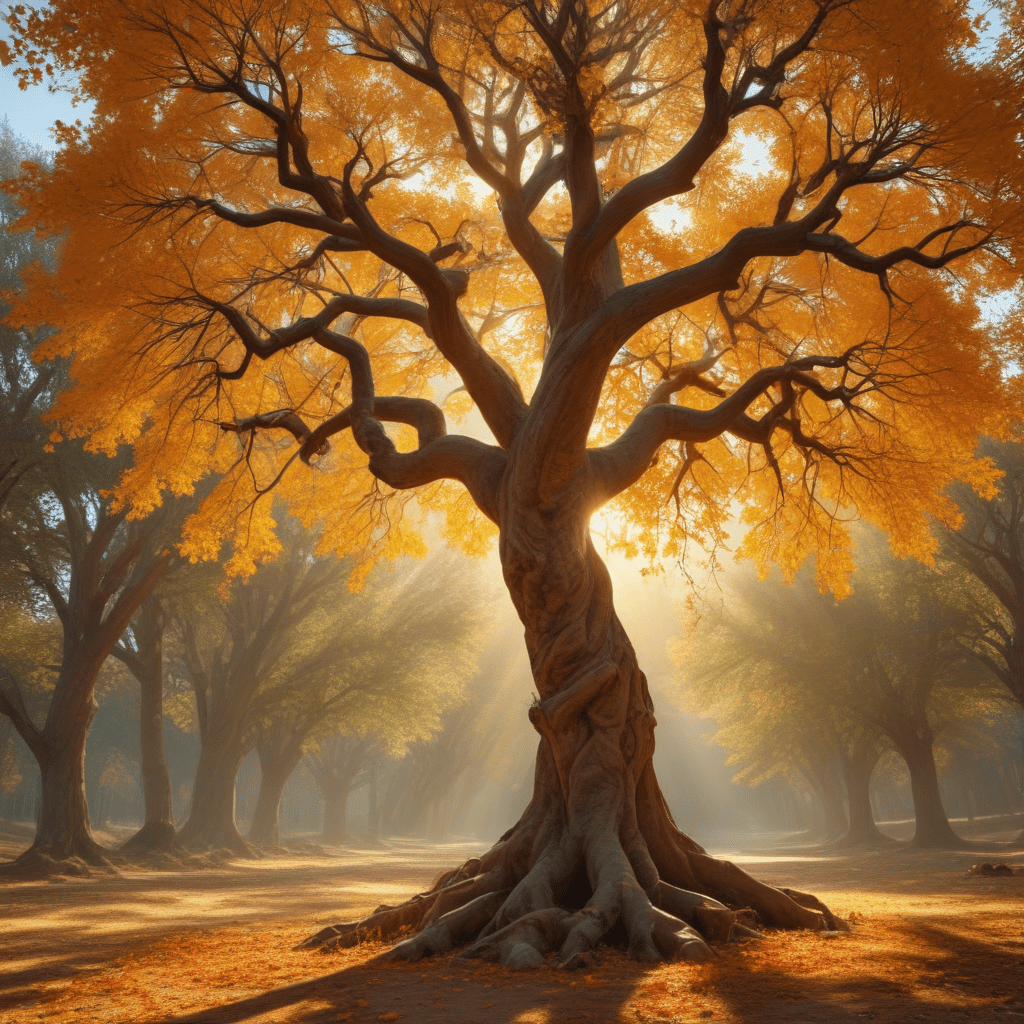1. Introduction
Persian mythology, with its rich tapestry of stories and symbols, offers a fascinating glimpse into the beliefs and values of ancient Persia. Among the many symbols that permeate this mythology, trees hold a prominent place, representing not only the physical world but also the spiritual and cosmic realms. This article delves into the symbolism of trees in Persian mythology, exploring their significance in various aspects of Persian culture and belief systems.
2. The Tree of Life
The Tree of Life, known as Gaokerena in Zoroastrianism, stands as a central symbol of cosmic order, immortality, and divine knowledge. This mythical tree, rooted in the heavens and reaching down to the earth, represents the connection between the physical and spiritual realms. Its branches are said to bear all the seeds of life, symbolizing the potential for creation and renewal. The Tree of Life also serves as a source of wisdom and knowledge, offering guidance to those who seek it.
3. The Cypress Tree
The cypress tree, with its tall, slender form and evergreen foliage, holds a profound symbolic meaning in Persian mythology and literature. Associated with mourning and remembrance, it is often planted in cemeteries and near tombs. The cypress tree's evergreen nature symbolizes the enduring nature of the soul and the hope for immortality. Its tall, straight form also represents the righteous path that leads to eternal life.
4. The Willow Tree
The willow tree, with its graceful weeping branches and association with water, embodies sorrow, love, and beauty in Persian mythology. Its drooping branches evoke a sense of sadness and longing, often associated with unrequited love or the loss of a loved one. However, the willow tree also symbolizes beauty and resilience, as its ability to thrive near water represents the capacity for renewal and growth even in the midst of grief.
5. The Palm Tree
The palm tree, with its majestic stature and abundant fruit, carries significant symbolic weight in Persian mythology and culture. It is associated with victory, prosperity, and hospitality. The palm tree's tall, straight trunk symbolizes strength and resilience, while its abundant fruit represents the blessings of abundance and generosity. Its presence in gardens and architecture signifies a welcoming and hospitable environment.
6. The Pomegranate Tree
The pomegranate tree, with its vibrant red fruit and abundant seeds, holds a rich symbolic meaning in Persian mythology and culture. It is associated with fertility, abundance, and immortality. In Zoroastrianism, the pomegranate tree is linked to the god Ahura Mazda, the creator of all life. Its numerous seeds represent the potential for creation and renewal, while its red juice symbolizes the blood of life and sacrifice. The pomegranate tree also features prominently in religious ceremonies, where it is offered as a symbol of abundance and prosperity.
7. The Rose
The rose, with its delicate petals and intoxicating fragrance, has long held a prominent place in Persian mythology and poetry. It is associated with love, beauty, and passion. The rose is often used as a metaphor for the beloved, and its thorny stem symbolizes the pain and sacrifice that accompany love. In Persian gardens, roses are prized for their beauty and fragrance, and they are often used to adorn palaces and tombs. The rose also features prominently in Persian poetry, where it is used to express a wide range of emotions, from love and longing to joy and sorrow.
8. Conclusion
The symbolism of trees in Persian mythology reflects the deep connection between the physical and spiritual realms in Persian culture. Trees are not merely objects of nature but also symbols of cosmic order, immortality, and divine knowledge. From the Tree of Life to the rose, each tree carries a unique meaning that has shaped Persian beliefs and values for centuries.
FAQ
What is the most important tree in Persian mythology?
The Tree of Life, known as Gaokerena, is arguably the most important tree in Persian mythology. It represents cosmic order, immortality, and divine knowledge.
What is the significance of the cypress tree in Persian culture?
The cypress tree is associated with mourning and remembrance in Persian culture. It is often planted in cemeteries and near tombs.
What does the willow tree symbolize in Persian mythology?
The willow tree symbolizes sorrow, love, and beauty in Persian mythology. Its drooping branches evoke a sense of sadness and longing, while its ability to thrive near water represents renewal and growth.
What is the significance of the palm tree in Persian culture?
The palm tree is associated with victory, prosperity, and hospitality in Persian culture. Its tall, straight trunk symbolizes strength and resilience, while its abundant fruit represents blessings of abundance and generosity.
What does the pomegranate tree represent in Persian mythology?
The pomegranate tree is associated with fertility, abundance, and immortality in Persian mythology. Its numerous seeds represent the potential for creation and renewal, while its red juice symbolizes the blood of life and sacrifice.
What is the significance of the rose in Persian poetry?
The rose is associated with love, beauty, and passion in Persian poetry. It is often used as a metaphor for the beloved, and its thorny stem symbolizes the pain and sacrifice that accompany love.




